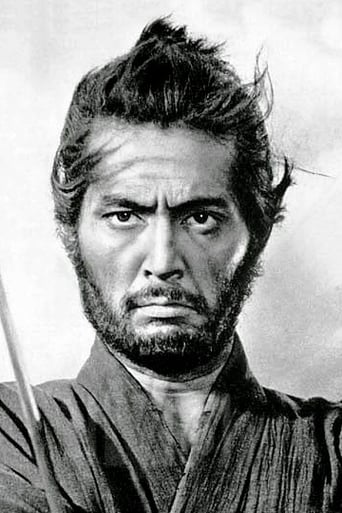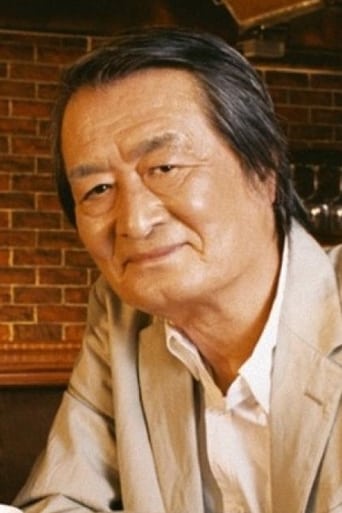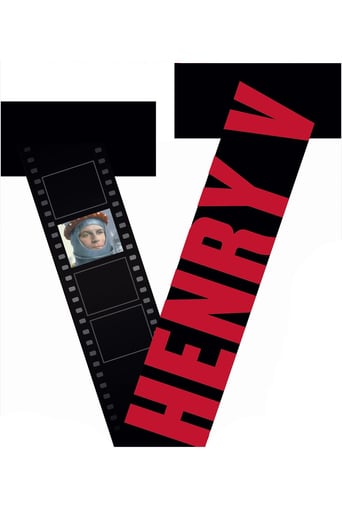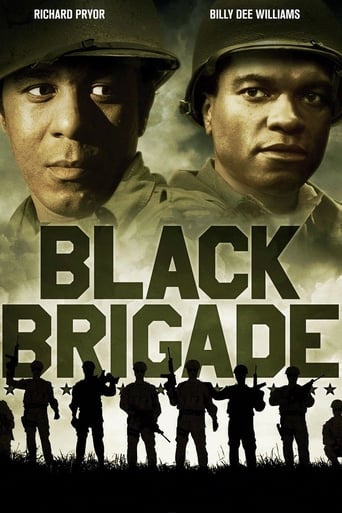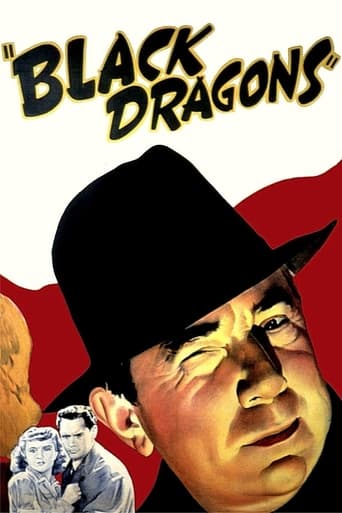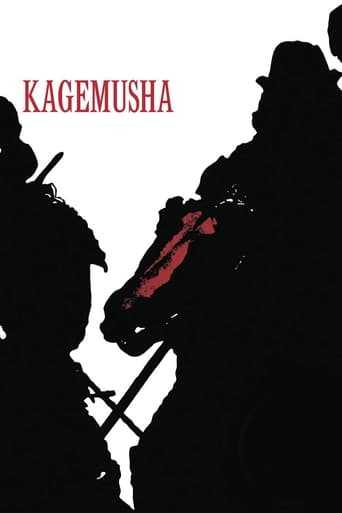
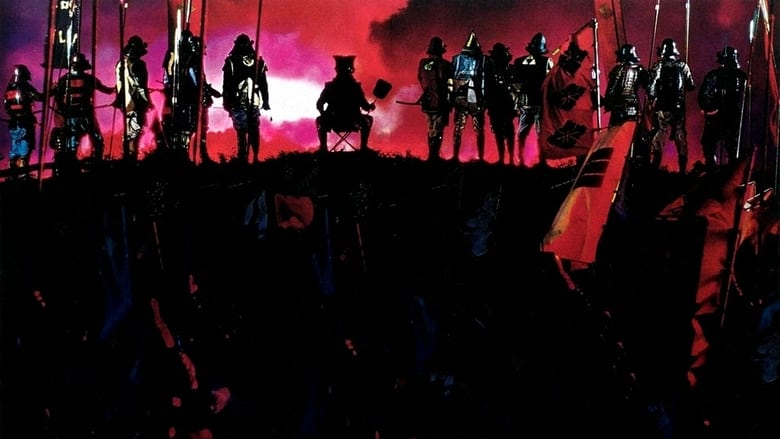
Kagemusha (1980)
Akira Kurosawa's lauded feudal epic presents the tale of a petty thief who is recruited to impersonate Shingen, an aging warlord, in order to avoid attacks by competing clans. When Shingen dies, his generals reluctantly agree to have the impostor take over as the powerful ruler. He soon begins to appreciate life as Shingen, but his commitment to the role is tested when he must lead his troops into battle against the forces of a rival warlord.
Watch Trailer
Cast


Similar titles
Reviews
It tells the story of a powerful warlord, Shingen, in Japan's feudal conflict. He is wounded and before succumbing to them he orders his clan to find a double so that his enemies will not attack. I found this to be a rather interesting, enthralling and captivating piece of cinema. The study of imitation not just through physical embodiment, but also in mind. The double was a petty thief, all of sudden is then given power and responsibility of an entire clan. The gradual process of him being selfish to then becoming a role model was executed brilliantly. The beauty of it is that you can see how he is also convincing himself, the original warlord's family love him just as much as the original and he succumbs to this love. It's a different tradition, he came from following no rules to now creating them. Tatsuya Nakadai performed really well, his facial expressions were extremely emotive. I could see the fear in his eyes and the terror of bloodshed. But, again, the star of the show is Akira Kurosawa who really was a technical genius behind the camera. The first scene alone was a five minute one take shot. What a statement! Already I was hypnotised by his directing methods. His use of colour, slow panning shots during the dramatic scenes and then the frantic quick cuts during the war scenes. The production design and costumes were authentic, definitely felt like 1500s Japan. I like how different sub-clans had different coloured armour and banners, it made distinguishing the characters much easier. It's a long run time of 159 minutes and yet it didn't feel like it all, there is always something happening on screen. My only negative would be the heavy political script, there were times where I had no idea who was who or what was what. So many castle names and so many clans, I felt like I needed a notebook. Having said that, I am extremely susceptible to traditional Japan and their culture, not to mention the great performances and direction. Close to perfection!
The smoke in "Kagemusha" lingers in my mind, whether it comes from the morning fog over a lake, or the end of a barrel from a gun in its spectacular battle sequences. Tatsuya Nakadai plays both the Warlord and the Imposter, and how captivating he remains during this plight. Though Toho Studios couldn't afford to complete the movie, longtime Kurosawa enthusiasts George Lucas and Francis Ford Coppola convinced 20th Century Fox to pay the remaining budget for international distribution rights. Lucas and Coppola were awarded executive producer credits.Set in the Sengoku period of Japan, a thief is spared death and taught to impersonate a dying warlord in order to dissuade opposing lords from attacking the vulnerable clan for the next few years. Though initially reluctant and unworthy, the imposter begins to earn the clans respect and comes to enjoy the love of his people and his position. The story is based on daimyo Takeda Shingen, and the film culminates with a stunning portrayal of the 1575 Battle of Nagashino.The colours of this movie are beautiful, the highlight being the unforgettable "nightmare" sequence in all its gorgeous silence. Shintaro Katsu (Famous for playing blind blade master "Zatoichi", for some 25 movies) was originally the lead, however he supposedly angered Kurosawa when he brought people along to film Kurosawa's directing abilities. This lead to the employment of Mr. Nakadai, and easily remains his best performance in his line of Kurosawa pictures. Sure he already appeared as the Uber cool gunman in "Yojimbo" (1961), and would also go on to portray a heartbreaking rendition of insanity in "Ran" (1985). Here he is two separate people imitating the other one seamlessly. Being a 3 hour picture and in terms of pacing it is possibly the slowest of Kurosawa's filmography, and I think 20 minutes of this movie could be removed and you wouldn't be able to tell the difference. With all that said though, "Kagemusha" won the 1980 Palme d'Or at the Cannes Film Festival, and I still remember all of its imagery vividly.Final Verdict: One of Kurosawa's last great epics, and certainly one of his period drama's worth watching. 9/10.
Kurosawa said it himself, this is a film that was designed as a dress rehearsal for "RAN", and you can see it. Kagemusha has a lot of experimentation with shots, colors, and a fairly loose editing style with a kind of free form structure. It's essentially a giant experimentation for what could work in a film, and what doesn't. The style is fairly rushed as well. The kind of care or calculated artwork that we'd normally get from a Kurosawa film is simply not here.That's not to say that the film is bad, because it isn't, but the kind of careful craftsmanship that we're so used to with a Kurosawa has been given some high octane fuel, and as such we don't get shots that linger too long on one subject. Not shots that are muted in tone. We get lots of moving shots as well; pans, a few subtle zooms, and the occasional tracking shot. This isn't normal for a Kurosawa film. Again, here we have a kind of "let's shoot this to see what we've got" kind of movie. The culmination of which we will eventually see in the film he shot afterwards; "RAN"."Kagemusha" is also a bit of a departure for Kurosawa in that it deals with real historical events and characters. Most of the films I've seen by Kurosawa have dealt with traditional fiction. But here we a kind of docudrama, albeit altered for dramatic effect and for the big screen. Again, not such a big deal here, because the film does work.Lots of people heap praises on this film, and where I admit to its craftsmanship, it's essentially a preparation for another film. Watch it for what it's worth and enjoy what you can.
This one is known by many to be a 'warm-up' to "Ran". Perhaps that should have been a warning, as I wasn't a huge fan of that film. But still, I remained interested in this one and it looked good. But lordy did I find this one a big, beautiful, empty bore. I mean, sure, the visuals are crazy good at times, lovely colors, and it is just in general a great looking movie. Excellent design and all. But at the same time I sort of feel that's all that was to it.The performances here aren't nearly as stilted or obnoxious as some in "Ran", and in fact I really like Tatsuya Nakadai in this. The problem here is that I don't think anyone involved was given much interesting material to work with. It isn't that I don't think there is an interesting story to be told here, but I sort of see this movie as a missed opportunity. Instead of focusing more on developing the character of the impersonator, too much time is spent on scenes of rival sides scheming and questioning if Shingen is alive or dead. Things seem to only be addressed on the surface and the character interactions are never given enough time to breath. More importantly, this might not be as much of a problem if the film didn't move at such an excruciating pace. Some films are deliberately paced a certain way and some films are slow-burning, but this one just feels slow, period, and without much of a purpose most of the time.Additionally, I often found that scenes and drama were laboriously set-up within the story, then those scenes slowly unfolded, and then there is little actual pay-off. Take for instance the section of the story where the one Clan leader decides to send a priest carrying medicine as a supposed "gift" to Shingen, but really they want to find out if Shingen is actually alive or not. This is thoroughly explained by the Clan leader. Then when the priest arrives, Shingen (or the impersonator) and his fellow leaders discuss how they KNOW what the other Clan leader is up to, and how they must hide it! Then when the scene actually HAPPENS there ends up being little to no tension and nothing actually comes of it. It's just completely frustrating to watch! Scenes go on forever and sometimes the film just feels dead. All of a sudden then we'll cut to a scene of rousing music as men on horse-back prepare for battle. It felt like it all had no real flow at all. Even the battle scenes were really disappointing -- the ones at night were very hard to follow.I will admit that the movie can be a stunner at times. That ending is really something, but even then it feels like the film is shouting "LOOK HOW EPIC AND TRAGIC I AM!!!!" Sort of like "Ran", really. But in retrospect, this film makes me appreciate "Ran" even more, for where that movie sort of falls apart for me in its later stages, at least it had a little umpf to it. "Kagemusha" feels like it never actually gets off the ground. Kurosawa is a great filmmaker, but I can't get behind this one.


